With the rapid advancement of science and technology,3D printing technology has penetrated into many fieldsand become a key part of modern manufacturing. Among many 3D printing technologies,multi-jet fusion (MJF) technology stands out and attracts attentiondue to its high efficiency, high precision and high flexibility.
This article will provide an in-depth analysis of the working principle of multi-jet fusion technology, and discuss its application examples and future development prospects in manufacturing.
How Does Multi Jet Fusion (MJF) Work?
When amulti-jet fusion 3D printing jobstarts, engineers place a movable building block inside the printer. The printer then begins operation by first spreading a layer ofpowder material, which may includepolyamide 11 (PA 11), polyamide 12 (PA 12) or thermoplastic polyamide (TPA). Next, the printing and fusing assembly moves to the designated build area, where the inkjet head precisely applies the fusing agent. After the current layer is printed, the building block moves back slightly to allow the printer to continue laying down the next layer of powder and repeat the printing process. After the overall print job is complete, the operator removes the building blocks, allows them to cool for a period of time, and then separates the printed parts from the loose powder. In order to completely remove the remaining powder on the parts, operators will also use tools such as sandblasting, air guns or water guns for fine cleaning.
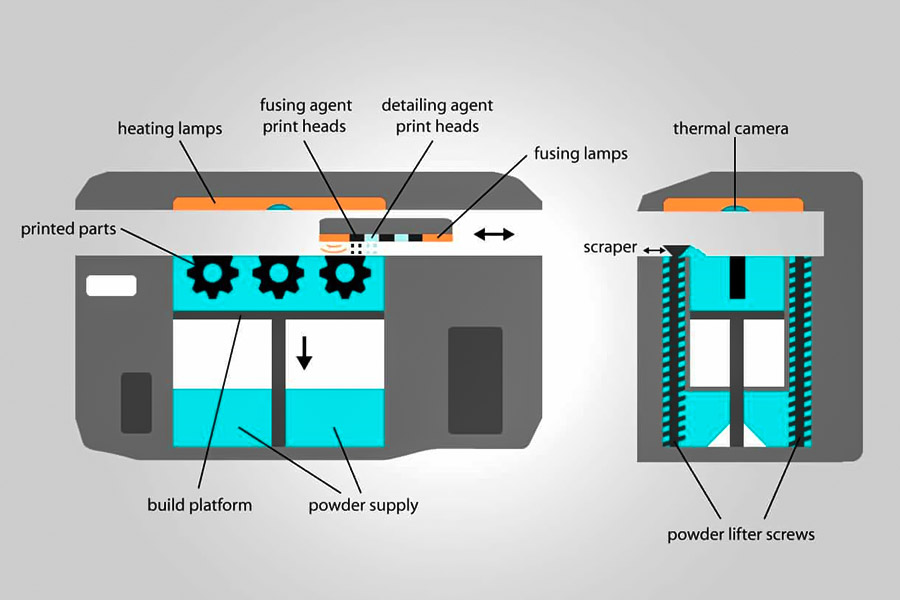
What Are the Key Steps in the Multi Jet Fusion Process?
Theworking principle of multi-jet fusion technologyis based on the combination of a powder bed and an inkjet print head, achieving 3D printing of objects by precisely controlling the injection of liquid binder and the fusion of powder. The specific process is as follows:
- Powder laying:Before printing starts, the printer first lays a thin layer ofpolymer powderon the print bed. These powders are usually thermoplastics, such as nylon PA12, etc.
- Inkjet printing:Aninkjet printhead runs on a layer of powder, accurately spraying two key agents: a fusing agent and a refiner, based on a digital model of the desired object. The fusing agent is used to combine the powder particles together to form a solid layer; while the refiner is used to adjust the degree of fusion of the powder and improve the molding accuracy.
- Heating and solidification:The infrared heating device scans the entire powder bed and heats the area where the fusing agent is added to melt and solidify it. This process ensures fusing results and print quality.
- Layer-by-layer accumulation:After one layer of printing is completed, the printer will lay down a new layer of powder on top of the cured layer and repeat the above steps of inkjet printing and heat curing. This process is repeated until the entire object isprinted layer by layer.
- Post-processing:After printing is completed, post-processing steps such as cooling, recovering unmelted powder, and sandblasting to remove residual powder are required to ensure the final quality and performance of the printed object.
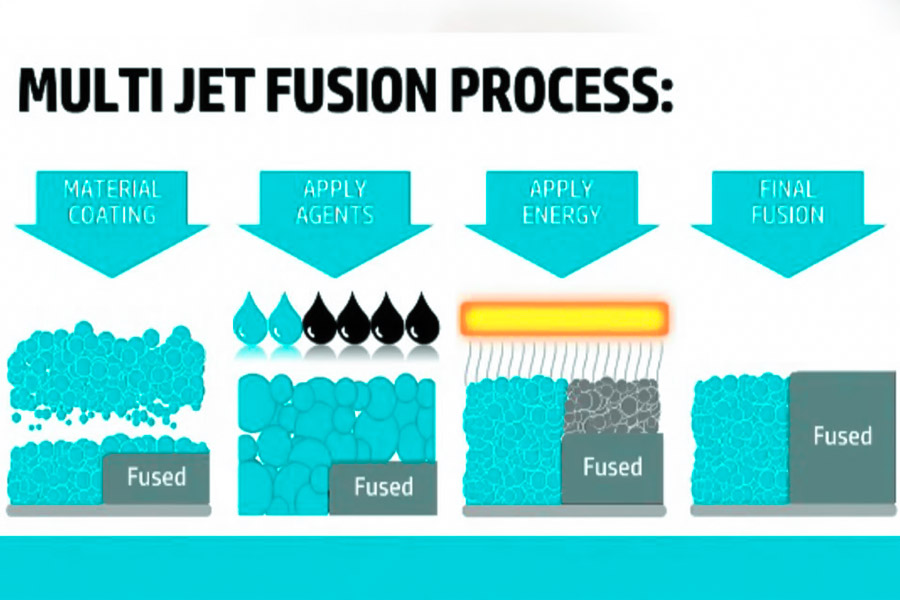
What is the post-processing process of the multi-jet fusion technology?
Post-processing of multi-jet fusion technologymainly includes the following key steps:
- Cooling phase:This process takes place inside the building unit. It is worth noting that although HP provides the module units for natural cooling, the building units do not have to wait for the powder and parts to be completely cooled to start the new printing task.
- Unmelted powder recovery:When the construction unit is cooled to a suitable temperature, it is moved to a special treatment station. There, the unmelted powder is drawn through a vacuum system and collected into a specific container for later reuse.
- Residual powder removal:In order to completely remove the residual powder from the surface of the parts, sandblasting, air injection or water injection is usually used. This step can be performed either manually or automatically by equipment such as a drum, ultrasonic washer or vibratory polishing machine.
What Are the Advantages of Multi Jet Fusion?
MJF is HP's 3D printing technology. It deposits melting agent and refiner on the powder bed through the inkjet print head to achieve high-precision printing. Its advantages are as follows:
| Advantages | Description |
|---|---|
| Almost | Multi-jet fusion can be prepared up to 10 times faster than selective laser sintering (SLS) and fused deposition modeling (FDM), enabling fast printing jobs. |
| High precision | By spraying fluxes and fine agents, as well as employing high-precision printheads and powder spreading systems, it is possible to obtain a finished product with a smooth surface, high feature resolution, and consistent mechanical properties. |
| The material is extensive | It can be applied to a wide range of materials, including plastics such as nylon, metals and ceramics, providing design and manufacturing possibilities for a wider range of applications. |
| Reduce costs | The efficient multi-jet melting system and low raw material cost make the cost of 3D printed products greatly reduced and improve market competitiveness. |
| environmental protection | The technology reduces waste and energy consumption, which reduces the environmental impact. |
What Are the Limitations of Multi Jet Fusion?
Althoughmulti-jet fusion (MJF) technology has many advantages, it also has some limitations. The following is a detailed analysis of thelimitations of MJF technology:
| Limitations | Description |
|---|---|
| High cost of equipment | Since it is basically a monopoly of Hewlett-Packard, the cost of equipment consumption remains high. |
| Color is limited | Due to the influence of chemical reagents in the manufacturing process, the color of printed parts is generally gray or black, which limits the choice of color. |
| High production losses | There is a certain amount of loss in the production process, which may affect the long-term guarantee and production cost of the product. |
What Materials Are Used in Multi Jet Fusion?
Multi-jet fusion (MJF) technologyhas been widely used in the field of3D printingdue to its high efficiency and high precision. This technology primarily uses thermoplastic powder materials, and here are some common material types:
Nylon 12 (PA12)
- Features:PA12 is a high-performance nylon material with high strength, good abrasion resistance, chemical resistance and low moisture absorption. It maintains stable performance over a wide temperature range.
- Application:Suitable for manufacturing various functional parts, such as automobile parts, tool handles, casings of electronic equipment, etc., especially where high strength and wear resistance are required.
Nylon 11 (PA11)
- Features:PA11 is more flexible than PA12, has higher impact strength and better low temperature toughness. It also has good chemical and abrasion resistance.
- Application:Suitable for manufacturing parts that require high flexibility and impact resistance, such as pipes, hoses, seals, etc.
Polypropylene (PP)
- Features: PP is a lightweight material with good chemical resistance, heat resistance and low cost. It is easy to process and has good resistance to stress cracking.
- Application:Suitable for manufacturing various lightweight components, such as containers, packaging materials, automotive parts, etc., especially where cost reduction and weight reduction are required.
TPU (thermoplastic polyurethane)
- Features:TPU has rubber-like flexibility, high elasticity and wear resistance. It remains elastic over a wide temperature range and has good tear strength.
- Application:Suitable for manufacturing parts that require elasticity, softness and wear resistance, such as soles, seals, hoses, sports equipment, etc.
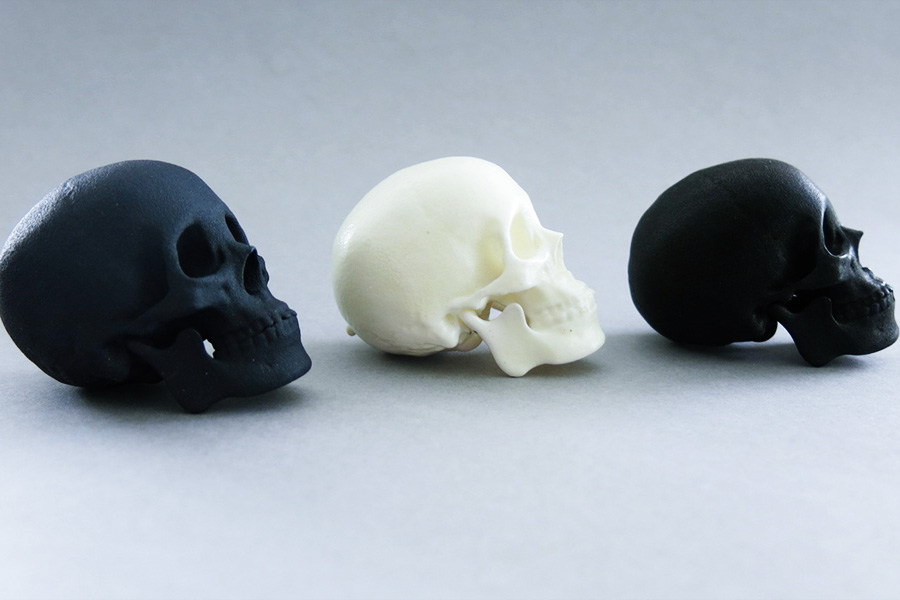
What Are the Industrial Applications of Multi Jet Fusion?
MJF technology has a wide range of industrial applications, with main areas including:
- Medical and prosthetic limbs:MJF technology can print high-precision complex medical equipment,such as surgical navigation tools and customized implants; at the same time, it can create highly compatible and powerful personalized prosthetic limb parts.
- Automobile lightweighting:This technology is used to manufacture functional and structural parts of automobiles. It has the characteristics of high strength and lightweight, and can design complex geometric shapes. It is especially suitable for printing lightweight parts, reducing the weight of automobiles, and improving fuel efficiency and performance.
- Aerospace:MJF technology can quickly manufacture high-precision complex prototype parts and shorten the product development cycle; at the same time, it cancustomize various high-precision and durable aerospace tools.
- Consumer goods:In footwear manufacturing, MJF technology prints durable and comfortable soles, insoles and midsoles, supporting personalized customization; in addition, it is used to manufacture beautiful and durable electronic product casings, such as smartphones, tablets and notebooks, which also supports personalized design.
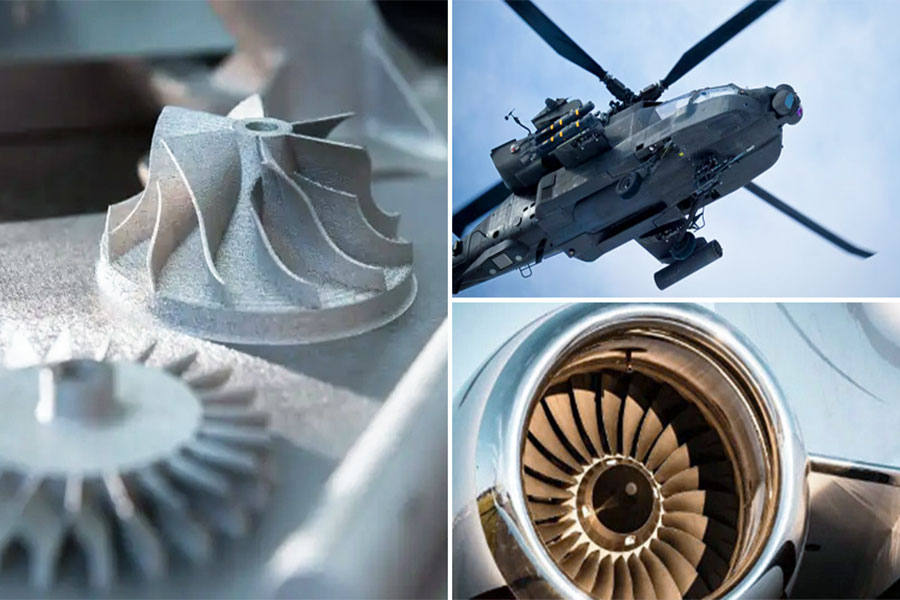
How Cost-Effective Is Multi Jet Fusion?
Thecost-benefit analysis of multi-jet melting (MJF) technologyis as follows:
Cost
- High material utilization:MJF technology can achieve high material utilization by precisely controlling the melting and solidification of powder. Compared with other3D printing technologies (such as SLS or FDM), there is less material waste.
- Higher initial investment:The initial purchase and installation costs of MJF equipment may be higher, including equipment costs, site preparation, personnel training, etc.
- Significant cost-effectiveness for medium-sized production batches:For medium-sized production batches, the cost-effectiveness of MJF technology is particularly outstanding. Due to its efficient printing speed and high material utilization, the average cost per part can be significantly reduced.
- Low post-processing costs:Parts printed withMJF technology usually have better surface qualityand accuracy and require fewer post-processing steps, thus reducing additional processing costs.
Benefits
- High production efficiency:MJF technology has faster printing speed, can shorten the production cycle and improve production efficiency.
- Strong design flexibility:This technology can print parts with complex geometric shapes, providing designers with greater freedom and helping to innovate designs.
- Strong customization capabilities:MJF technology supports on-demand printing and personalized customization, which can meet the specific needs of different customers.
- Wide range of applications: MJF technology has broad application prospects in medical, automotive, aerospace, consumer goods and other fields, providing manufacturers with more market opportunities.
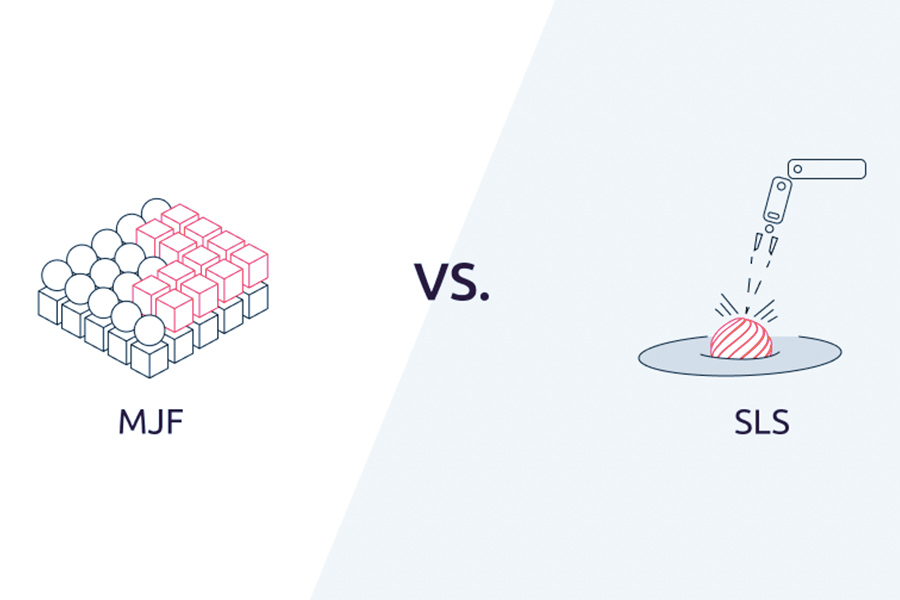
LS: Your Only Supplier For Customized Parts
With over 15 years of manufacturing experience, we handle cnc parts with tolerance of up to 0.005mm, same day quotation, and 72 hours delivery. We have produced over 80,000 different parts of different quantity. Our aim is to provide top quality and high efficiency metal parts machining services for prototyping as well as mass production customers. LS has been in a leading position in similar industries in CNC machining, injection molding, sheet metal Fabrication, metal stamping, rapid prototyping, 3D printing and other services. Turn your ideas into reality with our excellent on-demand manufacturing services to produce simple and complex prototypes and final parts, all of our products meeting strict tolerances and quality requirements.
Summary
Multi-jet fusion technology has shown great potential and value in the field of 3D printingdue to its high efficiency, precision and flexibility. With the continuous advancement of technology and the continuous expansion of applications, MJF technology is expected to play a more important role in the manufacturing industry. In the future, we can expect to see more innovative applications and technological breakthroughs based on MJF technology, injecting new vitality into the development of the manufacturing industry.
Disclaimer
The content on this page is for reference only.LSdoes not make any express or implied representation or warranty as to the accuracy, completeness or validity of the information. No performance parameters, geometric tolerances, specific design features, material quality and type or workmanship should be inferred as to what a third party supplier or manufacturer will deliver through the Longsheng Network. It is the responsibility of the buyerseeking a quote for partsto determine the specific requirements for those parts.Pleasecontact usfor moreinformation.
LS Team
LS is an industry-leading companyspecializing in custom manufacturing solutions. With over 20 years of experience serving more than 5,000 clients, we focus on high-precisionCNC machining,sheet metal fabrication,3D printing,injection molding,metal stamping,and other one-stop manufacturing services.
Our factory is equipped with more than 100 advanced 5-axis machining centers and is ISO 9001:2015 certified. We provide fast, efficient, and high-quality manufacturing solutions to customers in over 150 countries worldwide. Whether it’s low-volume production or large-scale customization, we can meet your needs with delivery as fast as 24 hours. ChoosingLS Technologymeans choosing efficiency, quality, and professionalism.
To learn more, please visit our website:www.lsrpf.com
FAQs
1.How does multi-nozzle fusion printing work?
Multi-nozzle fusion printing (here may refer to multi-jet fusion, a similar concept to MJF technology, but "multi-nozzle fusion" is not a standard term) usually involves multiple nozzles spraying molten material simultaneously or sequentially, which is quickly cooled and solidified on the printing platform to form the desired three-dimensional object. However, in the actual application of MJF technology, the powder material is usually melted by one or more heat sources (such as laser or infrared radiation) rather than sprayed by a nozzle. So, if the question refers to MJF technology, then its working principle is to melt layers of powder through a heat source, accumulating layer by layer to form an object.
2.What is the MJF process?
The MJF (Multiple Jet Fusion) process mainly includes the following steps: ①Preparation: Spread the powder material on the bottom layer of the printing platform. ② Melting: Use a heat source (such as a laser) to selectively melt materials on the powder layer based on the slicing data of the 3D model. ③ Solidification: The molten material cools quickly and solidifies, forming a strong bond with the powder layer below. ④Repeat: Repeat the above process layer by layer until the entire object is printed. ⑤Post-processing: Remove unmelted powder and perform necessary cleaning and processing on the printed object.
3.How does the FDM process work?
The FDM (Fused Deposition Modeling) process heats and melts filamentary materials (usually thermoplastics), then extrudes them from the nozzle, and deposits them layer by layer on the printing platform according to the slicing data of the 3D model. Each layer of material cools and solidifies rapidly after extrusion, forming a bond with the layer below. By accumulating layer by layer, the desired three-dimensional object is finally formed. The FDM process has the advantages of low cost, wide selection of materials, and easy operation.
4.What materials does MJF printing use?
MJF printing (multi-jet fusion) mainly uses powdered thermoplastic materials, such as nylon (PA), polycarbonate (PC), etc. These materials have good fluidity and bonding properties in the molten state, ensuring that printed objects have high strength and good surface quality. In addition, MJF technology can also print some special powder materials, such as composite materials containing metal particles, to meet specific application needs.
Resource







